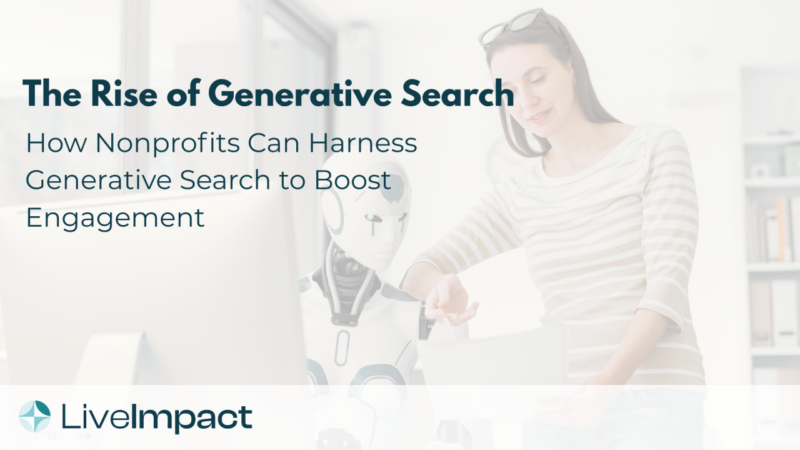A quiet but powerful shift is happening online. People are no longer just typing keywords into a search engine, they’re asking full questions to AI tools and getting answers in real time. This change in behavior marks the rise of Generative Engine Optimization (GEO).
While SEO (Search Engine Optimization) has long been the gold standard for improving content visibility, GEO is quickly emerging as the next frontier. And for nonprofits, this shift brings both a challenge and an opportunity.
What Is GEO?
GEO focuses on optimizing your content so it’s not just visible to search engines but also understandable and usable by AI tools like ChatGPT, Claude, or Gemini. These tools don’t return lists of links. They summarize. They answer. They interpret.
This means your website, resources, and reports need to be structured in ways that AI can easily parse, summarize, and include in its responses. The better prepared your content is, the more likely it is to surface in these new AI-powered experiences.
Why This Matters for Nonprofits
As more donors, clients, volunteers, and partners rely on AI tools to find information, traditional SEO tactics may no longer be enough. Nonprofits that fail to adapt risk becoming invisible in this new AI-first discovery environment.
But the flip side? Nonprofits that act now can become early leaders in discoverability. This is a chance to get ahead and ensure your mission, services, and thought leadership show up where people are now looking – inside the answers themselves.
How Nonprofits Can Prepare
Here are some steps to help your organization stay visible and relevant in the GEO era:
1. Structure Content Clearly
Make your web content easy for AI to understand. Use clear headings, concise paragraphs, and language that reflects the questions people might actually ask. AI models prefer content that is direct, well-organized, and easy to summarize.
2. Improve Accessibility
AI tools draw from a wide range of online sources. The more accessible your content is (available in multiple languages, screen-reader friendly, and mobile-optimised), the better chance it has of being included and referenced by AI.
3. Publish Credible, Mission-Aligned Content
Consistently publish original, high-quality content that reflects your expertise and work. That could include blog posts, impact stories, data-backed insights, or how-to guides. AI tools tend to pull from credible, trusted sources – so build a content library that positions you as one.
4. Use Metadata Thoughtfully
Add descriptions and alt text to media, clearly label PDFs and documents, and use schema markup where possible. These hidden details help AI better understand and contextualize your content.
5. Stay AI-Ready
Ensure your website and systems are equipped to engage with visitors who come through AI-assisted paths. Tools like multilingual AI chatbots, conversational navigation, and smart search make your content easier to access, especially for new audiences.
6. Test AI Tools Yourself
Try asking questions related to your mission in tools like ChatGPT or Perplexity. See what shows up. Is your organization mentioned? Is the information accurate? If not, you’ve identified a gap and an opportunity.
Solutions Are Already Here
The good news? You don’t have to navigate this transition alone. There are already purpose-built tools that help nonprofits adapt to this shift without needing to overhaul their entire website or hire a data science team.
For example, LiveImpact’s AI Smart Search helps nonprofits:
- Make their websites multilingual, without the need for costly translations
- Provide an accessible, conversational experience that helps all visitors find information whether it’s hidden in PDFs or across multiple pages
- Ensure their content is AI-ready and more likely to be picked up by tools like ChatGPT
- Reduce staff workload by automating FAQs and navigation
It’s the easiest and most cost-effective way to prepare your digital presence for the GEO era and make sure your impact doesn’t go unseen.
The Bottom Line
The web is moving from search to suggestions—from clicking links to receiving answers. GEO is about preparing your nonprofit’s content for that shift.
It’s not just a technical strategy. It’s a visibility strategy. It’s about making sure your mission, your programs, and your values are represented in the conversations and answers shaping tomorrow’s decisions.


